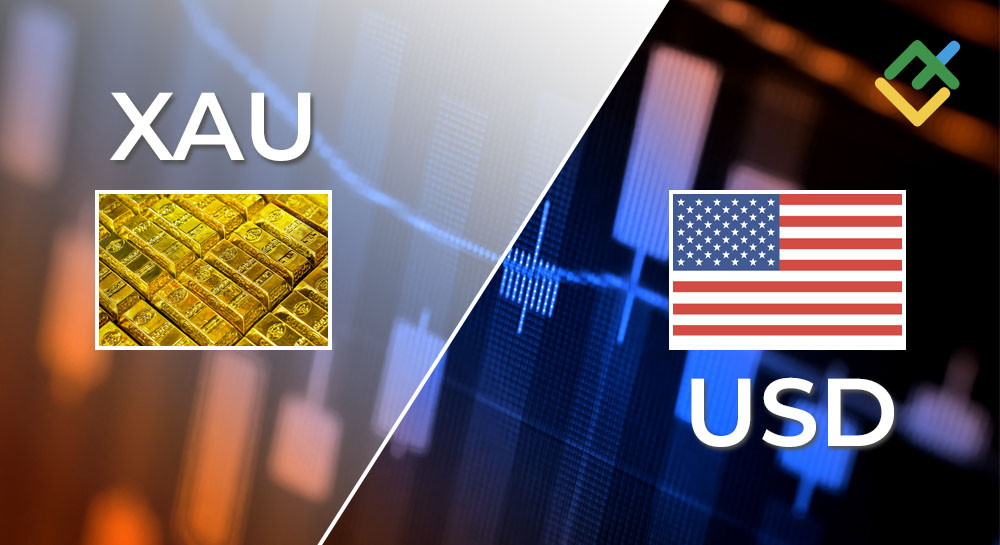
Market participants are ignoring statements by the Fed leaders to the effect that they need to wait for more convincing signals about inflation going down to the target range of 2% and are expecting the first interest rate cut at the September meeting of the US Central Bank. The weaker the macro data coming from the US, the more this opinion of the participants market will strengthen.
In the coming week, among other things, they will pay attention to the publication of data on the dynamics of US GDP and the Core PCE price index preferred by the Fed as an indicator of inflation.
Also in the coming week 22.07.2024 – 28.07.2024, market participants will pay attention to the publication of important macro statistics from Germany, the Eurozone, the UK, the US, Japan, as well as the results of meetings of the Central Banks of China and Canada.
Note: During the coming week, new events may be added to the calendar and / or some scheduled events may be cancelled. GMT time
The article covers the following subjects:
Key facts
- Monday: An unexpected decision by the National Bank of China may increase market volatility during the Asian trading session.
- Tuesday: No important macro statistics are expected to be published.
- Wednesday: The focus will be on business activity data in Germany, the Eurozone, the UK, the US, as well as the Bank of Canada meeting.
- Thursday: US GDP in the 2nd quarter.
- Friday: US PCE indexes, the Fed’s preferred indicator of inflation.
- Central event of the week: Data on the US GDP dynamics and PCE indices. Their publication can significantly affect the dynamics of the dollar.
Monday, July 22
01:15 – CNY: People’s Bank of China interest rate decision
Since May 2012, the People’s Bank of China has been steadily cutting interest rates to support Chinese manufacturers. The bank last lowered the rate in August 2023 (by 0.1% to 3.45% currently).
Starting around 2021, the world’s largest central banks began to tighten their monetary policies amid rising inflation. What will the Chinese Central Bank do this time after policy easing and pauses starting in September 2023?
It is likely that at this meeting the People’s Bank of China will keep the interest rate at the same level of 3.45%, although other decisions are not off the table.
If the People’s Bank of China makes unexpected statements, volatility may increase throughout the financial market, especially in Asia. Investors will also be interested in the bank’s assessment of the prospects for the Chinese economy and its policies in the near future.
06:00 – EUR: Retail sales
Retail sales are the main indicator of consumer spending in Germany showing changes in the volume of sales in the retail sector. A high result strengthens the euro, and vice versa, a low result weakens it.
Previous values: -1.2% (-0.6% in annual terms), +1.8% (+0.3% in annual terms), -1.9% (-2.7% in annual terms) , -0.4% (-1.4% in annual terms) in January 2024, -1.6% (-1.7% in annual terms), -2.5% (-2.4% in annual terms), +1.1% (-0.1% in annual terms), -0.8% (-4.3% in annual terms), -1.2% (-2.3% in annual terms) , -0.8% (-2.2% in annual terms), -0.8% (-1.6% in annual terms), +0.4% (-2.1% in annual terms), + 0.8% (-4.3% in annual terms), -2.4% (-8.6% in annual terms), -1.3% (-7.1% in annual terms), -0, 3% (-3.8% in annual terms) in January 2023.
The data shows an uneven recovery and, in some months, a slowdown in this sector of the German economy. Data better than the forecast and/or the previous value will likely have a positive impact on the euro, but in the short term.
Tuesday, July 23
No important macro statistics is scheduled to be released. However, traders might want to attention to the publication at 14:00 of the Eurozone Consumer Confidence Index, which may cause an increase in volatility in the euro quotes. This index is calculated from the results of a European Commission survey of European households, during which respondents are asked to assess the level of current and future economic conditions and the overall economic situation, including overall livelihood, income growth, employment and willingness to make large purchases. European consumers’ confidence in economic development and the stability of their economic situation is a leading indicator of consumer spending, which accounts for the majority of overall economic activity. A high level of consumer confidence indicates economic growth, while a low level indicates stagnation. Previous indicator values -14.0, -14.3, -14.7, -14.9, -15.5, -16.1 (in January 2024).
An increase in the indicator will strengthen the EUR, and a decrease in the value will weaken the EUR.
Wednesday, July 24
07:30 – EUR: Germany Manufacturing and services PMI according to S&P Global. Composite PMI according to S&P Global (preliminary release)
The PMIs for the manufacturing and services sectors of the German economy are important indicators of business conditions and the overall health of the German economy. These economic sectors form a significant part of Germany’s GDP. A result above 50 is seen as positive and strengthens the EUR, while a result below 50 is negative for the euro. Data worse than the forecast and/or the previous value will have a negative impact on the euro.
Previous values:
- Manufacturing PMI: 43.5, 45.4, 42.5, 41.9, 42.5, 45.5, 43.3, 40.8, 39.6, 38.8, 40.6, 43 ,2, 44.5, 44.7, 46.3, 47.3, 47.1, 46.2, 45.1, 47.8, 49.1, 49.3, 52.0, 54.8 , 54.6,
- Services PMI: 53.1, 54.2, 53.2, 50.1, 48.3, 47.7, 45.7, 48.2, 50.3, 52.3, 54.1, 57 ,2, 56.0, 53.7, 50.9, 50.7, 49.2, 46.1, 46.5, 45.0, 47.7, 49.7, 52.4, 55.0 , 57.6, 56.1, 55.8,
- Composite PMI: 50.4, 52.4, 50.6, 47.7, 46.3, 47.0, 47.4, 45.9, 46.4, 48.5, 50.6, 53.9 , 54.2, 52.6, 50.7, 49.9, 49.0, 46.3, 45.1, 45.7, 46.9, 48.1, 51.3, 53.7, 54 ,3, 55.1, 55.6.
08:00 – EUR: Eurozone Manufacturing and services PMI according to S&P Global. Composite PMI according to S&P Global (preliminary release)
The Eurozone Manufacturing and Services PMIs are important indicators of the health of the entire European economy. A result above 50 is seen as positive and strengthens the EUR, while a result below 50 is negative for the euro. Data worse than the forecast and/or the previous value will have a negative impact on the euro.
Previous values:
- Manufacturing PMI: 45.8, 47.3, 45.7, 46.1, 46.5, 46.6, 44.4, 43.1, 47.2, 42.7, 43.4, 44 ,8, 45.8, 47.3, 48.5, 48.8 (in January 2023),
- Services PMI: 52.8, 53.2, 53.3, 51.5, 50.2, 48.4, 48.8, 47.8, 48.7, 50.9, 52.0, 55 ,1, 56.2, 55.0, 52.7, 50.8 (in January 2023),
- Composite PMI: 50.9, 52.2, 51.7, 50.3, 49.2, 47.9, 47.6, 46.5, 47.2, 48.6, 52.8, 54.1 , 53.7, 52.0, 50.3, 49.3 (in January 2023).
08:30 – GBP: UK Manufacturing and services PMI according to S&P Global. Composite PMI according to S&P Global (preliminary release)
The UK Manufacturing and Services PMIs are important indicators of the health of the UK economy. The services sector employs the majority of the UK’s working population and contributes approximately 75% of GDP. The most important part of the services industry is still financial services. If the data turn out to be worse than the forecast and the previous value, the pound will most likely decline sharply in the short term. Data better than the forecast and the previous value will have a positive impact on the pound. At the same time, a result above 50 is considered as positive and strengthens the GBP, while a result below 50 s negative for the GBP.
Previous values:
- Manufacturing PMI: 50.9, 51.2, 49.1, 50.3, 47.5, 47.0, 46.2, 44.8, 44.3, 45.3, 46.5, 47 ,1, 47.8, 47.9, 49.3, 47.0, 45.3, 46.5, 46.2, 48.4,
- Services PMI: 52.1, 52.9, 55.0, 53.1, 53.8, 54.3, 53.4, 49.5, 49.3, 51.5, 53.7, 55 ,2, 55.9, 52.9, 53.5, 48.7, 49.9, 48.8, 48.8, 50.0, 50.9, 52.6,
- Composite PMI: 52.3, 53.0, 54.1, 52.8, 53.0, 52.9, 52.1, 48.7, 48.5, 50.8, 52.8, 54.0 , 54.9, 52.2, 53.1, 48.5 (in January 2023).
13:45 – CAD: Bank of Canada’s interest rate decision. Accompanying statement from the Bank of Canada
Following meetings held in 2022 and 2023, the Bank of Canada decided to increase the interest rate and spoke out in favor of further increases. Then, starting from the September 2023 meeting, Bank of Canada policymakers kept the interest rate at 5.00% recognizing that the uncertainty caused by high geopolitical tensions in the world, as well as the slowdown of the world’s largest economies accompanied by a decline in demand for oil, Canada’s main export, could dampen economic growth with inflation still high.
However, at a meeting on June 5, 2024, the Bank of Canada lowered the interest rate for the first time since July 2023 by 0.25%, to 4.75%. It is not yet entirely clear what the decision of the Bank of Canada leaders will be this time. It is possible that the Bank of Canada will take a pause at its meeting on Wednesday.
A tough tone of the Bank of Canada’s accompanying statement regarding rising inflation and the prospect of further tightening of monetary policy will cause the Canadian dollar to strengthen. If the Bank of Canada signals the need for loose monetary policy, the Canadian currency will decline.
13:45 – USD: Manufacturing and services PMI according to S&P Global. Composite PMI according to S&P Global (preliminary release)
PMI business activity indices in the most important sectors of the US economy prepared by S&P Global are important indicators of the state of the American economy as a whole. A result above 50 is considered positive and strengthens the USD, while a result below 50 is considered negative for the US dollar.
Previous PMI indicator values:
- Manufacturing PMI: 51.6, 51.3, 50.0, 51.9, 52.2, 50.7, 47.9, 50.0, 49.8, 49.0, 46.3, 48, 4, 50.2, 47.3, 46.9, 46.2, 47.7, 50.4, 52.0, 51.5,
- Services PMI: 55.3, 54.8, 51.3, 51.7, 52.3, 52.5, 51.4, 50.6, 50.1, 52.3, 54.4, 54, 9, 53.6, 50.6, 46.8, 44.7, 46.2, 47.8, 49.3, 43.7, 47.3, 52.7, 53.4, 55.6.
- Composite PMI: 54.8, 54.5, 51.3, 52.1, 52.5, 52.0, 50.9, 50.7, 50.2, 52.0, 53.2, 54.3, 53.4, 52.3, 50.1, 46.8 (in January 2023).
14:00 – CAD: Report of the Monetary Policy Committee of the Bank of Canada
The Bank of Canada’s Monetary Policy Committee will make its next quarterly report on current monetary policy issues containing information on changes in monetary policy. In this report, representatives of the Bank of Canada will explain the bank’s position and assess the current economic situation in the country. A tough tone of the report will cause the Canadian dollar to strengthen. If the Bank of Canada sends signals to extend the period of maintaining a loose monetary policy, the Canadian currency will decline.
14:30 – CAD: Bank of Canada’s press conference
During the press conference, head of the Bank of Canada Tiff Macklem will explain the bank’s position and assess the current economic situation in the country. If the tone of his speech is tough regarding the monetary policy of the Bank of Canada, the Canadian dollar will strengthen in the foreign exchange market. If Macklem speaks out in favor of loose monetary policy, the Canadian currency will decline. In any case, high volatility in the CAD quotes is expected during his speech.
Thursday, July 25
12:30 USD US annual GDP for the 2nd quarter (preliminary estimate). Durable goods orders. Capital goods orders (ex defense). Jobless claims
GDP data is one of the key indicators (along with labor market and inflation data) for the Fed in terms of its monetary policy. The strong result strengthens the US dollar; a weak GDP report has a negative impact on the US dollar. In the previous 1st quarter of 2024, GDP grew by +1.4%, after growth of +3.4% in the 4th quarter of 2023, +4.9%, +2.1% in the 2nd quarter, +2.2% in the 1st quarter of 2023.
If data points to a contraction in GDP in the 2nd quarter of 2024, the dollar will come under severe pressure. Positive GDP data will support the dollar and US stock indices.
Durable goods are solid products with an expected lifespan of more than 3 years, such as automobiles, computers, appliances, and aircraft. These products require significant investment to produce. Durable goods orders data is a leading indicator that reflects changes in the total value of new orders received by manufacturers. Rising orders for these products indicate that manufacturers are increasing activity to fill these orders.
Capital goods are durable goods used to produce other goods and services. The current indicator does not take into account goods produced in the defense and aviation sectors of the American economy.
Positive data strengthens the dollar, while negative data has a negative impact on the dollar. Any deterioration in the indicator compared to previous values and/or forecast may also have negative consequences for the dollar quotes, while better-than-forecasted data will have a positive impact on it.
- Previous values of the Durable goods orders indicator: +0.1%, +0.6%, +0.8%, +0.7%, -6.9%, -0.3% (in December 2023 of the year),
- Previous values of the Capital goods orders ex defense indicator: -0.6%, +0.2%, -0.1%, +0.4%, -0.4%, -0.6%, ( in December 2023).
Also at the same time, the US Department of Labor will publish a weekly report on the state of the American labor market with data on the number of initial and repeated claims for unemployment benefits. The state of the labor market (along with GDP and inflation data) is a key indicator for the Fed in determining the parameters of its monetary policy.
A result higher than expected and an increase in the indicator indicates a weak labor market, which negatively affects the US dollar. A drop in the indicator and its low value is a sign of recovery in the labor market and may have a short-term positive impact on the USD.
The number of initial and repeated claims for unemployment benefits is expected to remain at lows corresponding to the lows of the period before the coronavirus pandemic, and this is also a positive factor for the dollar indicating the stability of the American labor market.
- Previous (weekly) values based on data on initial applications for unemployment benefits: 222 thousand, 239 thousand, 234 thousand, 238 thousand, 243 thousand, 229 thousand, 221 thousand, 216 thousand, 223 thousand.
- Previous (weekly) values based on data on repeated applications for unemployment benefits: 1852 thousand, 1813 thousand, 1790 thousand, 1790 thousand, 1787 thousand, 1786 thousand, 1781 thousand, 1768 thousand.
23:30 JPY Consumer Price Index (CPI) . Core Consumer Price Index (Core CPI) in the Tokyo region (excluding food and energy prices)
Tokyo Consumer Price Indices are published by the Japan Bureau of Statistics and measure changes in the prices of a selected basket of goods and services over a given period. They are a key indicator for assessing inflation and changes in consumer preferences.
Previous values (annualized):
- Tokyo CPI: +2.3%, +2.2%, +1.8%, +2.6%, +2.5%, +1.8%, +2.4%, +2.6%, +3.3%, +2.8%, +2.9%, +3.2%, +3.2%, +3.2%, +3.5%, +3.3%, + 3 .4%, +4.4% (in January 2023),
- Tokyo CPI (excluding food and energy): +1.8%, +2.2%, +1.8%, +2.9%, +3.1%, +3.3%, +3 .5%, +3.6%, +3.8%, +4.0%, +4.0%, +4.0%, +3.8%, +3.9%, +3.8 %, +3.4%, +3.1%, +3.0% (in January 2023).
An indicator value below the forecast and/or previous values may trigger a weakening of the yen.
Friday, July 26
12:30 USD Personal Consumption Expenditures (Core PCE Price Index)
Personal consumption expenditure data measures the average amount of money consumers spend per month on durable goods, consumer goods and services. Core PCE price index does not include food and energy prices. Annual Core PCE is the Fed’s main measure of inflation.
In turn, the inflation rate (in addition to data from the labor market and GDP) is important for the Fed when determining the parameters of its monetary policy. Rising prices put pressure on the central bank to tighten its policy and raise interest rates.
PCE data above the forecast and/or previous values could push the US dollar higher, while a decrease in the indicator would most likely have a negative impact on the dollar.
Previous values (in annual terms): +2.6%, +2.8%, +2.8%, +2.8%, +2.9% (in January 2024), +2.9%, +3.2%, +3.5%, +3.7%, +3.8%, +4.3%, +4.3% +4.7%, +4.8%, +4, 8%, +4.7%, +4.7%, +4.6%, +4.8%, +5.1%, +5.2%, +4.9%, +4.7% , +4.8%, +4.7%, +4.9%, +5.2%, +5.3%, +5.2% (in January 2022).
14:00 USD University of Michigan Consumer Confidence Index (final release)
This indicator reflects the confidence of American consumers in the country’s economic development. A high level indicates economic growth, while a low level indicates stagnation. Previous indicator values: 68.2 in June, 69.1 in May, 77.2 in April, 79.4 in March, 76.9 in February, 79.0 in January 2024, 69.7 in December 2023, 61.3 in November, 63.8 in October, 68.1 in September, 69.5 in August, 71.6 in July, 64.4 in June, 59.2 in May, 63.5 in April, 62. 0 in March, 67.0 in February, 64.9 in January 2023, 59.7 in December, 56.8 in November, 59.9 in October, 58.6 in September, 58.2 in August, 51, 5 in July, 50.0 in June, 58.4 in May, 65.2 in April, 59.4 in March, 62.8 in February, 67.2 in January 2022. An increase in the indicator will strengthen the USD, and a decrease in the value will weaken the dollar. Data indicate an uneven recovery of this indicator, which is negative for the USD. Data worse than previous values may have a negative impact on the dollar in the short term.
The preliminary value was 66.0.
Price chart of USDCAD in real time mode
The content of this article reflects the author’s opinion and does not necessarily reflect the official position of LiteFinance. The material published on this page is provided for informational purposes only and should not be considered as the provision of investment advice for the purposes of Directive 2004/39/EC.
{{value}} ( {{count}} {{title}} )
This post is originally published on LITEFINANCE.



